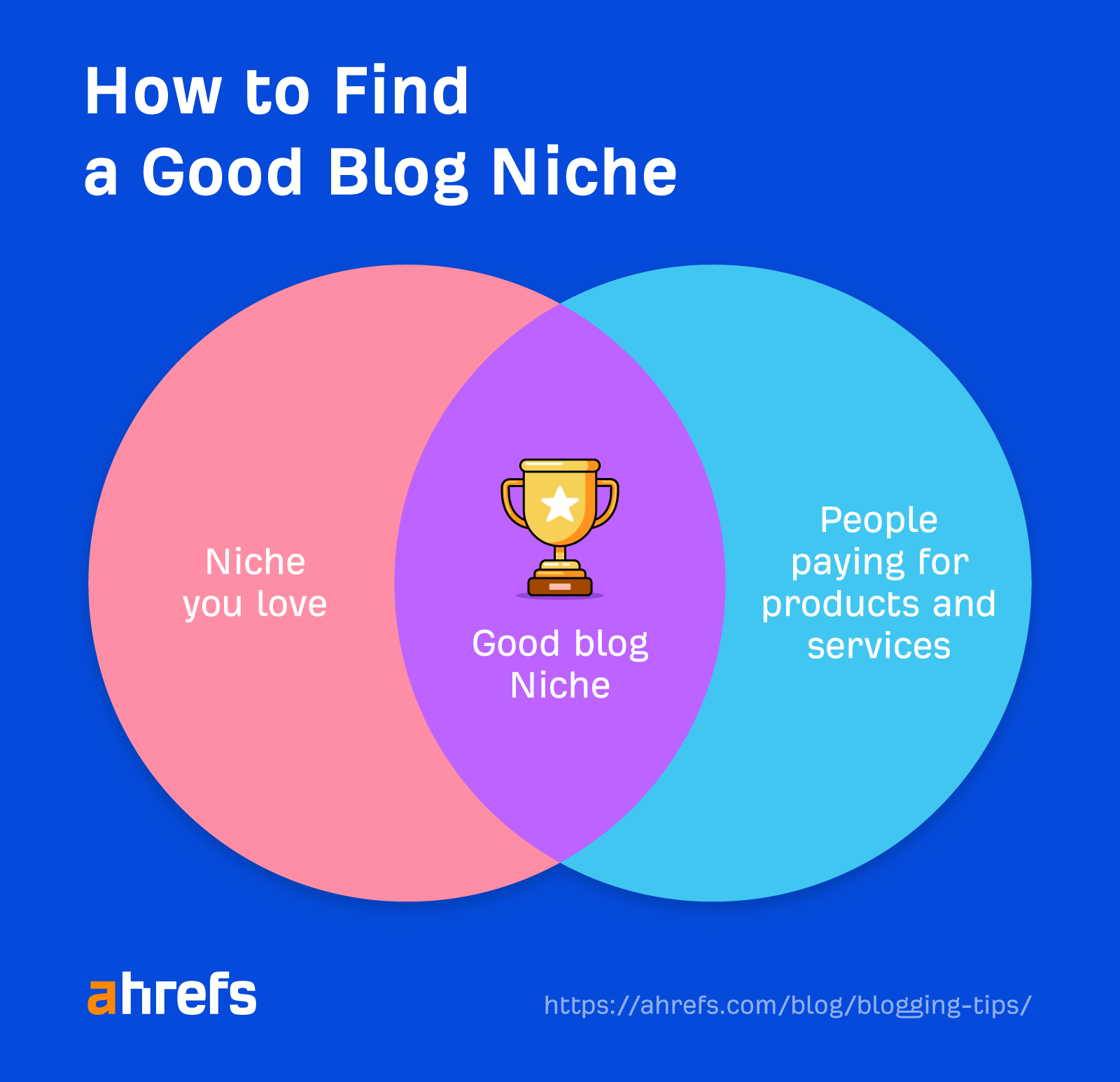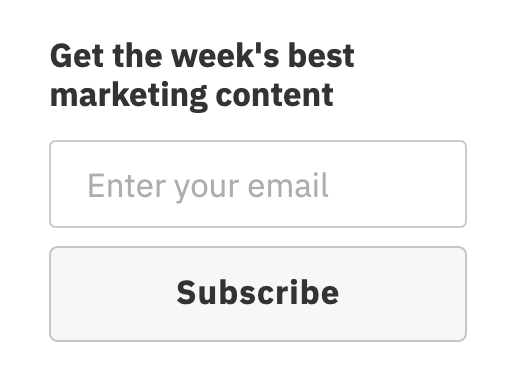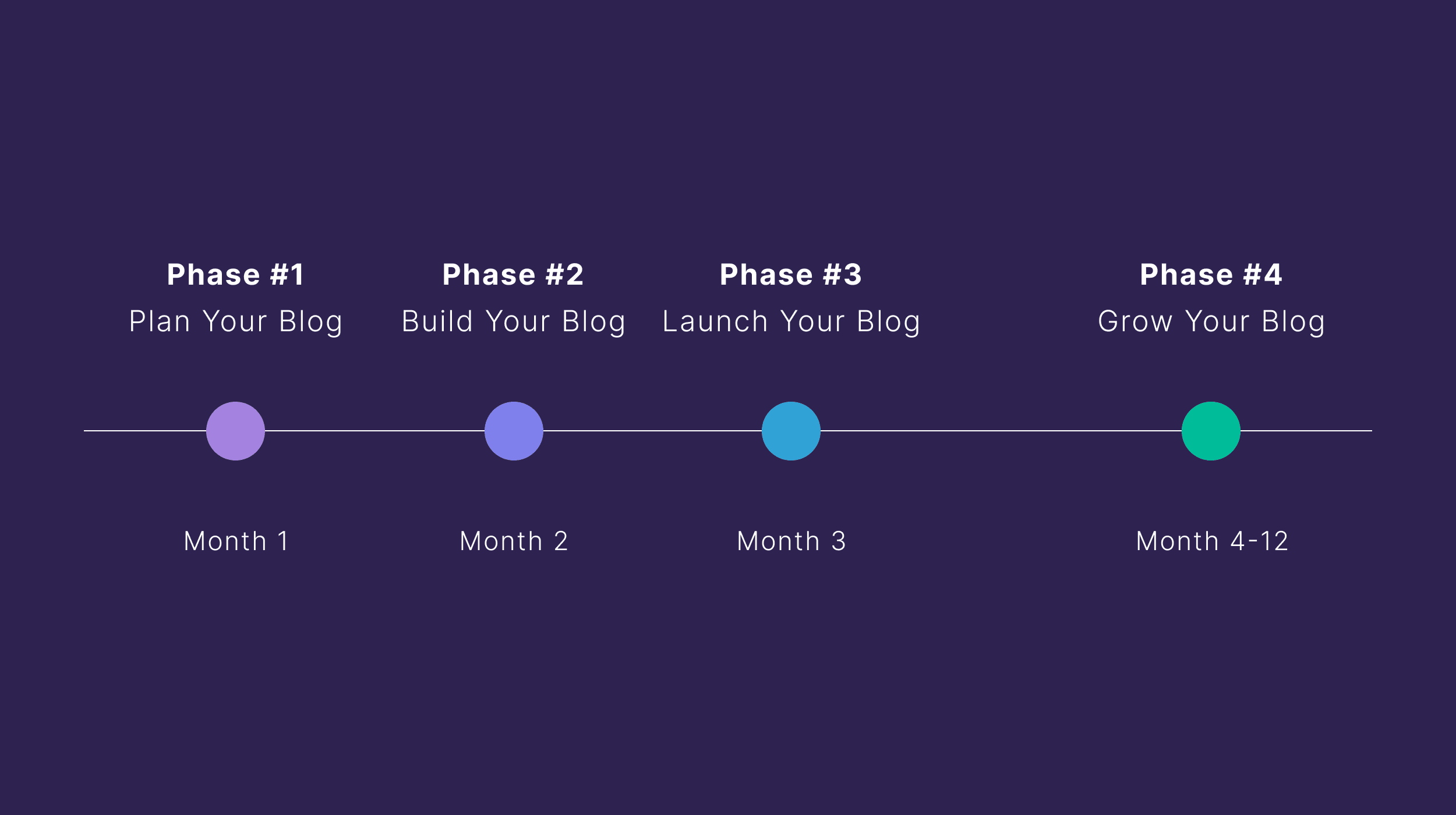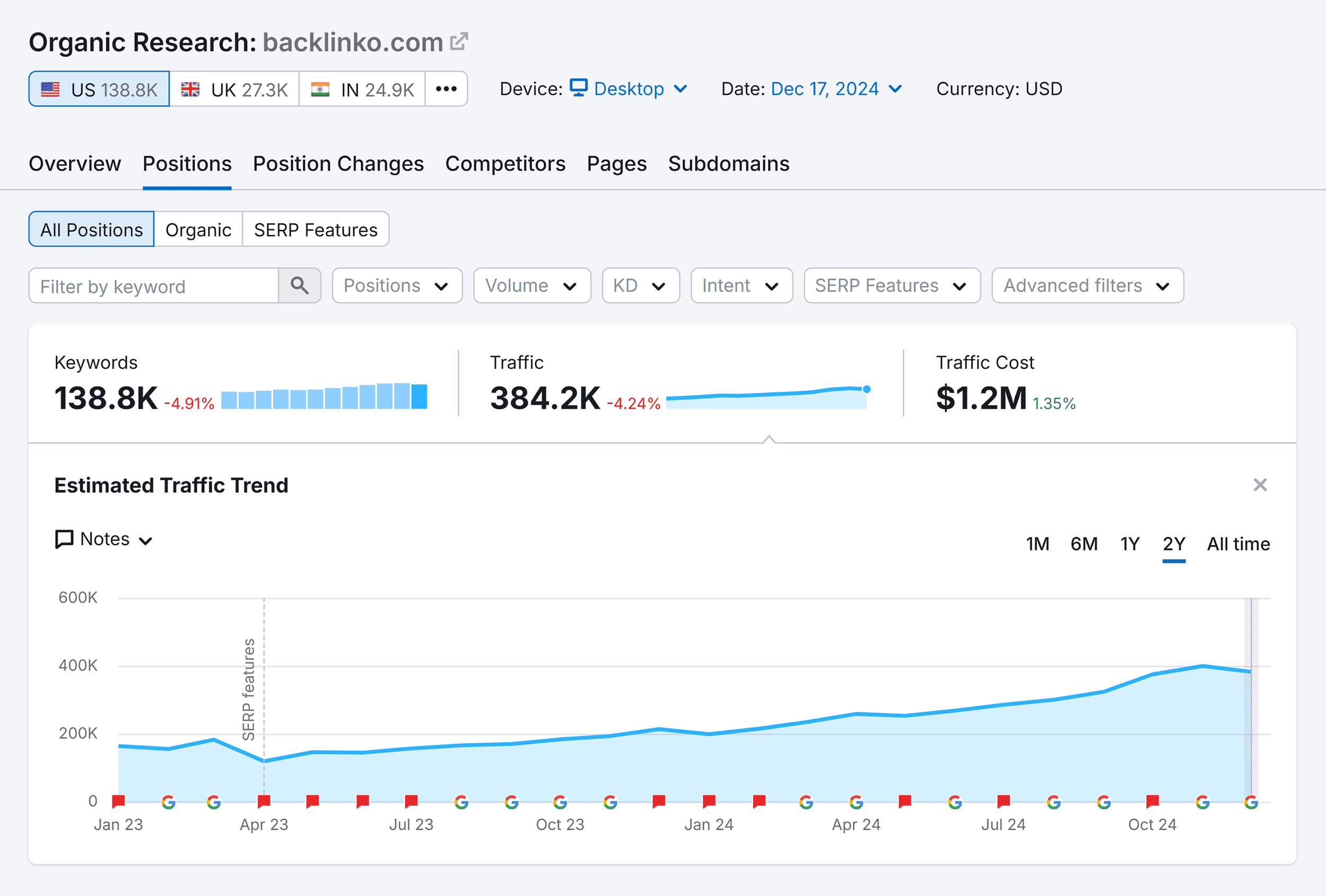If you want to get better at blogging, you need a proven list of blogging tips that are effective and practical, yet beginner friendly.
That list is on this page.
Try these blogging tips to become a better blogger and attract the loyal following you deserve.
Establishing a niche is important because it helps you attract readers who have a common interest around a topic. By going too broad, you’ll spread yourself thin, making it harder to gain meaningful traction.
The niche you choose will come down to a balancing act between three things:
- Passion or personal interest
- Reach
- Profit potential
Passion or personal interest:
Choosing a niche that you have at least some interest in is important because it can significantly impact your motivation and long-term commitment to your blog. If you’re uninterested in the topics you write about, it will show in your blog content.
Reach:
Choosing a broad niche (recipes) will expand your potential reach. But you’ll be competing against the behemoths of the Internet.
If you pick a niche that’s too narrow (Indian tomato chicken), it’ll be easier to stand out in your niche because there’s less competition. But you’ll severely limit your blog’s reach potential.
It’s best to choose something in between (bbq chicken recipes) where there’s potential to expand laterally (bbq beef recipes).
Profit potential:
If you hope to make money blogging, you’ll want to choose a niche where there’s some level of commerciality. You can get a rough idea by Googling key phrases related to your niche.
If there are ads, it’s a telltale sign that the topic has commerciality – why else would people be paying Google to appear for those queries?
But if you only see regular organic listings, then you may want to reconsider your niche.
Ideally, you’ll want to find something in the middle where you don’t sacrifice on the “passion or personal interest” quadrant.
Read our guide on finding a good blog niche for a more thorough guide.
A blogging platform, often referred to as a content management system (CMS), is where you’ll write and publish content, upload images, and respond to blog comments. There are many platforms you can choose from, most of which are free. The most popular self-hosted ones are:
If you can’t decide, consider using WordPress. Roughly 43% of all websites are built on it and there are tens of thousands of free plugins to extend the functionality of your blog.
The most successful bloggers know and attract their ideal readers. This is possible when you gain a deep understanding of your target audience.
Your audience defines the language you use, the tips you share, and the examples you give.
For example, let’s say that travel blog A, a blog for budget travelers, writes a blog post on tips for overseas flights. One of those tips might be to search for one way flights through alternative hubs to save money.
Compare that with travel blog B – a blog for business travelers. They can write a post on the same topic, but one of their tips might be to upgrade your ticket to business class using points.
If you don’t know who your target audience is, then you’re essentially writing blind. Don’t ignore this fundamental blogging tip and take the time to research who your audience is. Read our post on creating buyer personas to learn how.
53.3% of all website traffic comes from organic results in search engines like Google. That makes ranking high on Google for topics that people regularly search for a proven way to get consistent traffic.
The process of finding these blog post ideas is called keyword research.
Here’s how to do it:
- Go to a keyword research tool like Keywords Explorer
- Enter a niche-relevant keyword
- Go to the Matching terms report
- Switch the tab to Questions to find blog post ideas
- Choose topics based on traffic potential (estimated potential traffic if you were to rank #1)
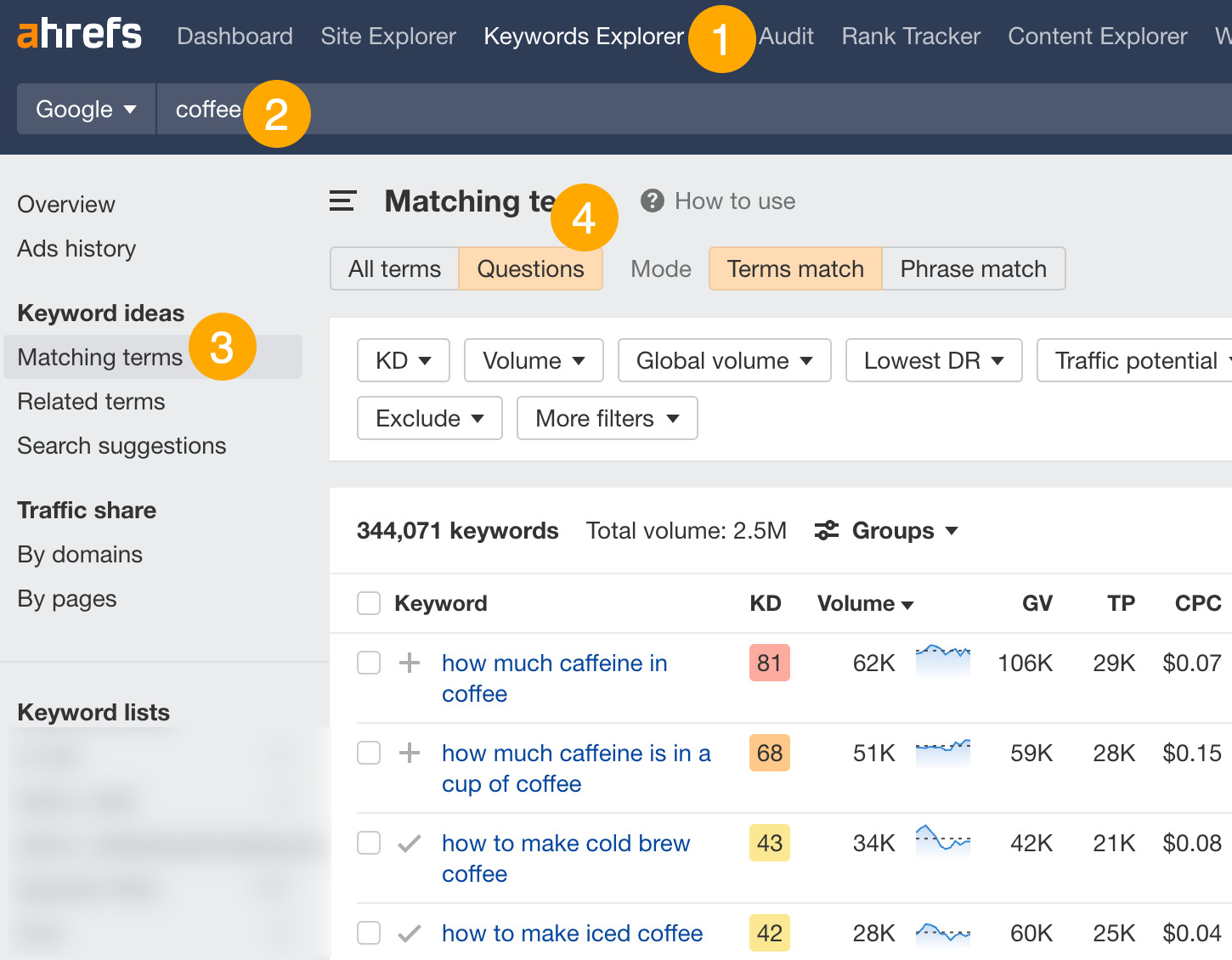
If you don’t have an Ahrefs account, you can try our free keyword generator.
A click is what separates your audience from your content. And the number one thing that influences a click is your headline.
Start with a working headline and then use the ABC formula to create a click worthy headline.
- A: Adjective
- B: Benefit
- C: Confidence booster
For example, if your working headline is “10 SEO Tips”, your final product might look like this.

Your headline has done its job and earned the click. Now it’s your intro’s turn to hook your readers and get them to keep reading.
Use the PAS formula to do that.
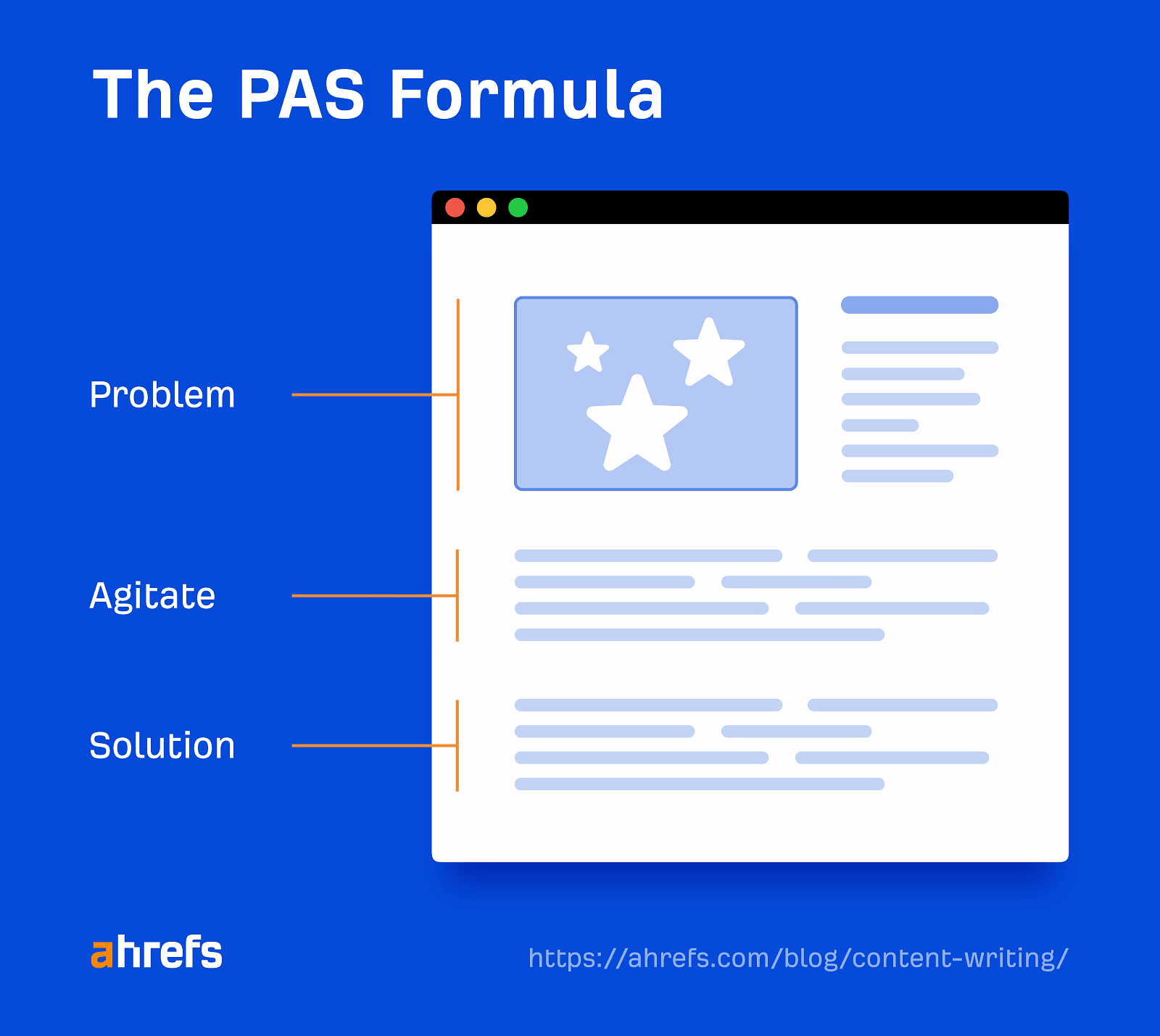
First, you define the problem:

Next, you agitate it:

Then, you offer a solution:
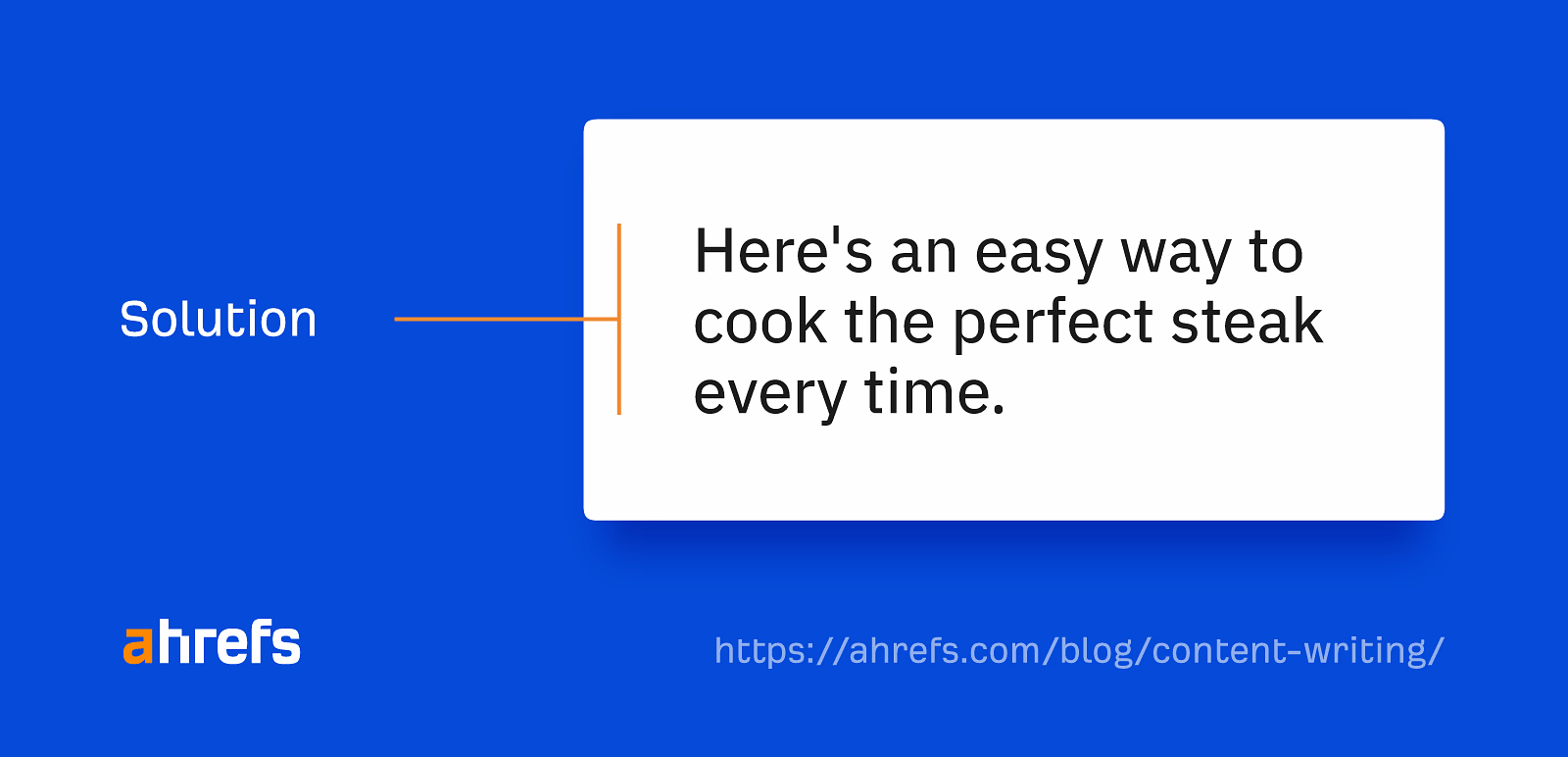
Readability improves user experience. This is important because if your readers can follow, skim, and understand your content, they’re more likely to read, engage, and even buy your products.
Here’s a list of blogging best practices to instantly improve readability:
- Use short sentences and paragraphs. Avoid “walls of text”
- Use bullets and numbered lists to cater to skimmers
- Use descriptive subheadings (H2–H6) for hierarchy
- Use images and videos (where needed) to break up the text
- Choose simple words that everyone can understand
- Write as you speak to make things conversational
- Read your copy out loud (when editing) to smooth the flow
An outline is a critical tool for bloggers which helps keep your thoughts organized. There are 3 main parts to include in your outline.
1. Introduction
Use the introduction to hook your readers so they’ll want to continue reading. If you’re using the PAS formula from blogging tip 6, then jot down some details for your problem, agitating point, and solution.
2. Body
This is where you’ll go into details and deliver on any promises made in your introduction. Start by jotting down the ideas you have. Then categorize and order them to create a well-structured article.
If you’re having trouble coming up with subtopics, go to Google and search for your main topic. Then look at some of the competing articles and look for common subtopics they talk about.
3. Conclusion
Wrap up your main points and bring closure to any problems you stated in your introduction.
An outline is a blogger’s defense against writer’s block. Don’t skip this.
One of the best places to find proven blog post ideas is on your competitors’ sites. They’ve already done the keyword research, content writing and ranking using SEO. So all you have to do is find which topics send them the most traffic, and then write your own piece of content on the topic.
Competitor research can be done with a tool like Site Explorer. Here’s how:
- Go to Site Explorer
- Enter your competitor’s domain
- Go to Top Pages
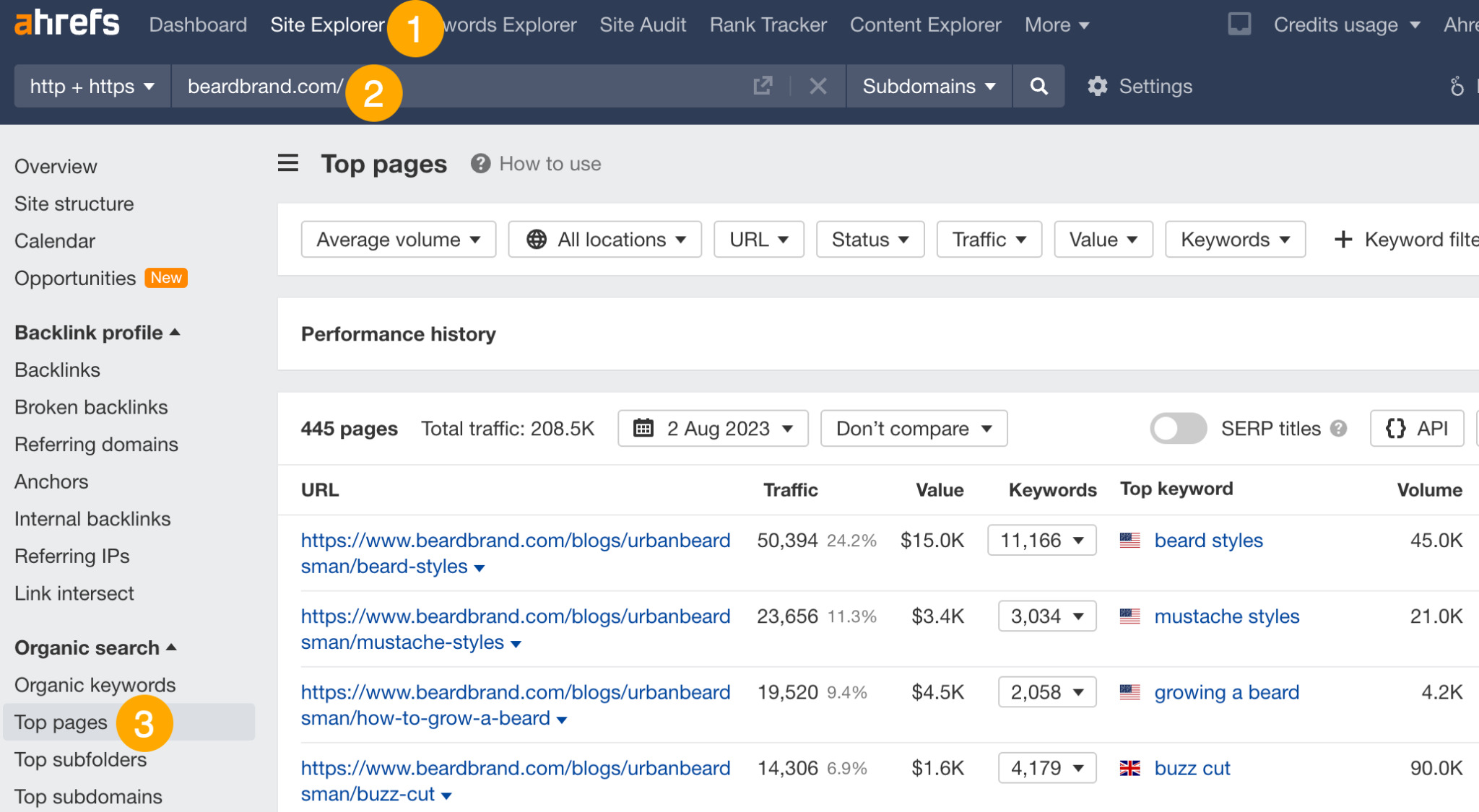
You’ll see the articles that send your competitors the most search traffic. For example, Beardbrand’s article on beard styles gets an estimated 50,000 monthly search visits. If you are competing with Beardbrand, you can target the topic “beard styles” too.
It’s easy to make mistakes and miss things when you’re writing blog posts. So it’s worth getting a second pair of eyes on your content before you hit “publish.”
We do this all the time at Ahrefs. We read each other’s content and offer feedback—areas that can be removed, points that can be clarified, and sentences that can be worded better.
We’ve even reflected that in our blog posts.

Trying to do everything alone is one of the most common blogging mistakes I see from beginner bloggers.
An editorial calendar helps bloggers prioritize, visualize, and stick to a regular publishing schedule. We’ve used one at Ahrefs for years.
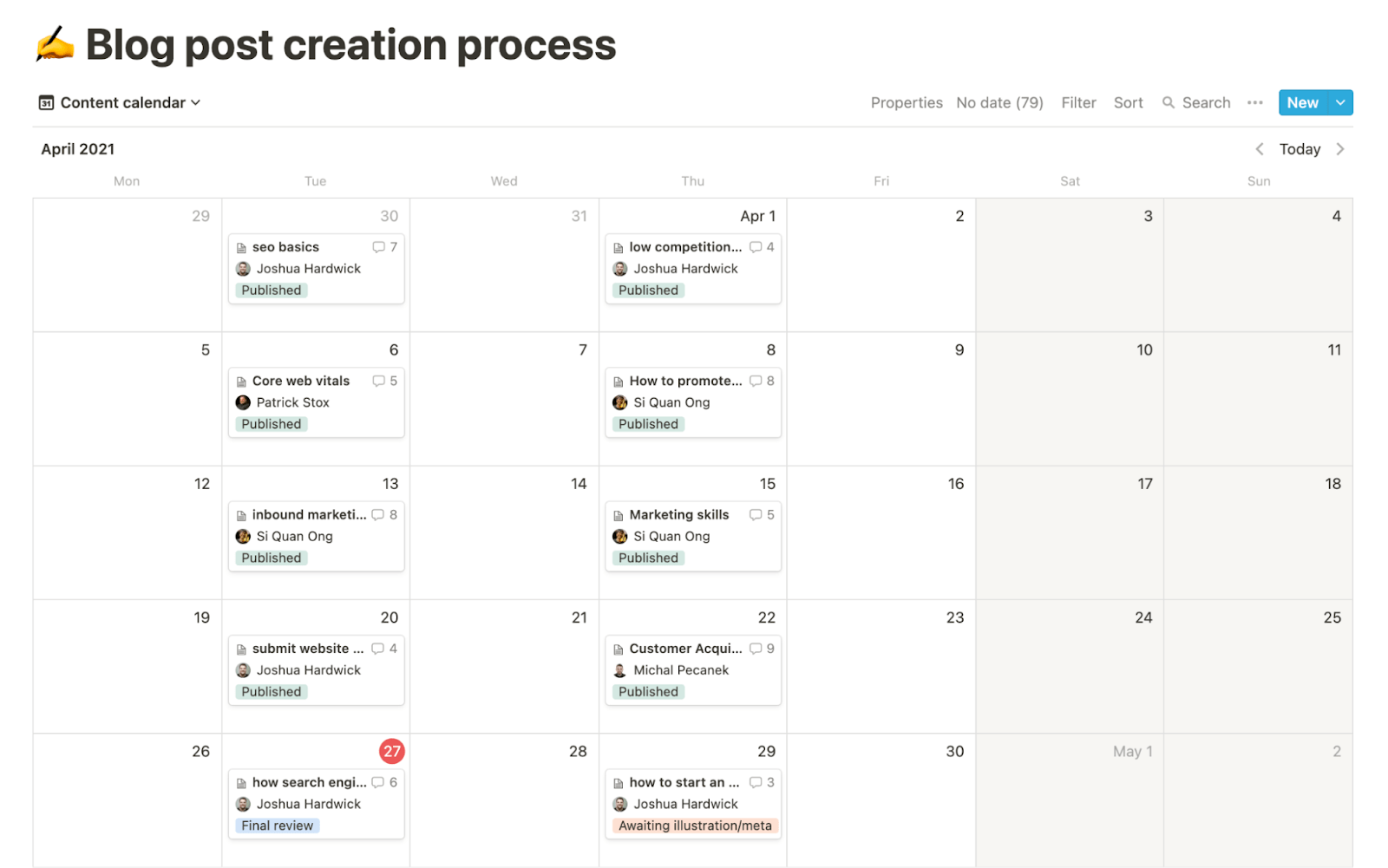
You can use nearly any project management tool (free and paid) to create a content calendar in minutes. Here are a few tools I’ve tried:
- Notion
- Basecamp (current)
- Trello
- Airtable
- Google Sheets
- Google Calendar
Treat each blog post as a project, create deadlines, and most importantly, stick to your calendar.
If you haven’t signed up for social media accounts for your blog, do it now. Even though you’re unlikely to get a flood of followers in the beginning, sharing on social media can still help people discover your blog.
Here are two reasons why you shouldn’t ignore integrating your blog with social media.
- People search in social media for brands. If you’re not there, no one will find you.
- You don’t necessarily need a following to get traffic from social media. For example, many people use search to discover new content on Pinterest. The same holds true for TikTok and Instagram.
You can automate sharing blog posts with tools like Buffer.
Many newbie bloggers put email marketing on the back burner because it might seem complicated or not worth the effort. But this is a huge beginner blogging mistake.
Building an email list is one of the best ways to grow a loyal following.
We send a weekly blog newsletter to our subscribers. 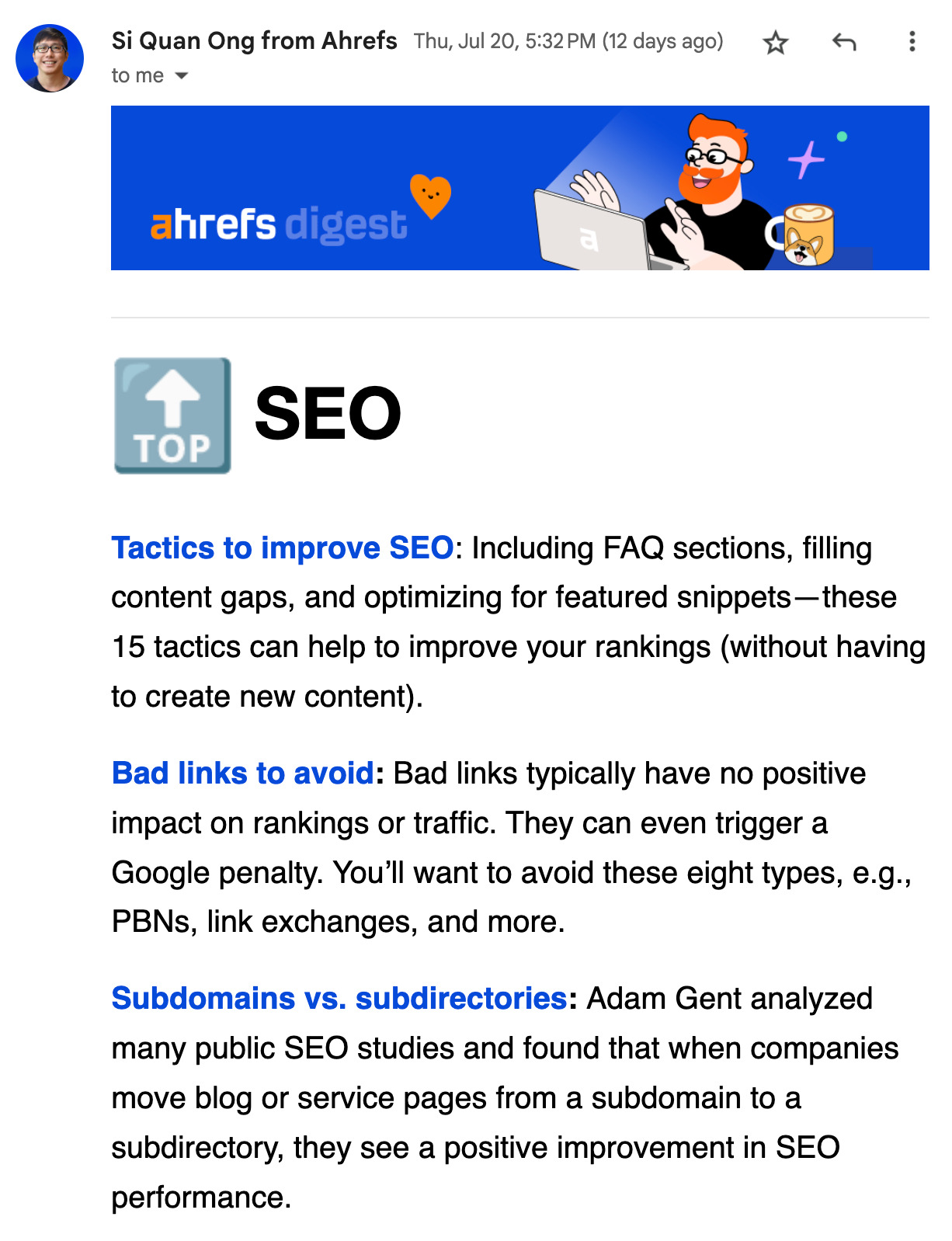
Think about it like this:
Someone who opts into an email newsletter is asking to be contacted with more content from you. If you don’t offer a way for people to join your email list, you’re doing your readers a disservice.
Here’s how you can get started.
- Sign up for a free account with an email marketing service provider like ConvertKit or Mailchimp.
- Add an opt-in form on your website.

If you’re using WordPress for your blog, there are free plugins for most email marketing tools.
Within a few minutes, you can be turning readers into email subscribers.
AI tools are useful when it comes to menial blogging tasks. You can use it to:
- write meta descriptions
- brainstorm titles
- reword sentences
… and the list goes on.
The most popular free tool is ChatGPT. You can also try some of our free AI writing tools that are perfect for bloggers and content creators.
Unfortunately, “quality content” alone isn’t enough to grow traffic to your blog. You need to actively promote your blog. In addition to the easier promotion tips mentioned earlier (12 and 13), I recommend trying these tactics and strategies.
Search engine optimization (SEO)
Our blog generates hundreds of thousands of monthly visitors from search engines. SEO is how we get them. Take our free SEO course to learn how you can do it too.
Online communities
Websites like Quora and Reddit are a great place to share your content. Post your content in a helpful way, and it can lead to sudden spikes in traffic.
We did this for our keyword research guide on Reddit which was well received.
PRO TIP
You can use Ahrefs’ Site Explorer to learn which pages on Quora get the most search traffic and post your answers on those pages.
- Search for quora.com in Site Explorer
- Go to the organic keywords report
- Search for a keyword related to your niche
- Hit the caret to see the estimated search traffic to a page
Then leave helpful responses with a link to your blog posts.
Guest blogging
Guest blogging is when you write content on another blog as a guest. It helps expose you and your brand to a new audience. This can help kickstart your blogging journey as you work to build your reputation in your niche.
Read our guide on guest blogging to learn how you can get started.
Website monitoring tools like Google Analytics, Google Search Console, and Ahrefs Webmaster Tools provide intelligence on your blog visitors. All of these tools are free to use.
Beyond looking at metrics like pageviews, you can use these tools to find insights which you can use to build out your content strategy.
For example, if you look at the Best By Links report for our blog, you’ll see that our most linked to content are consistently data studies.
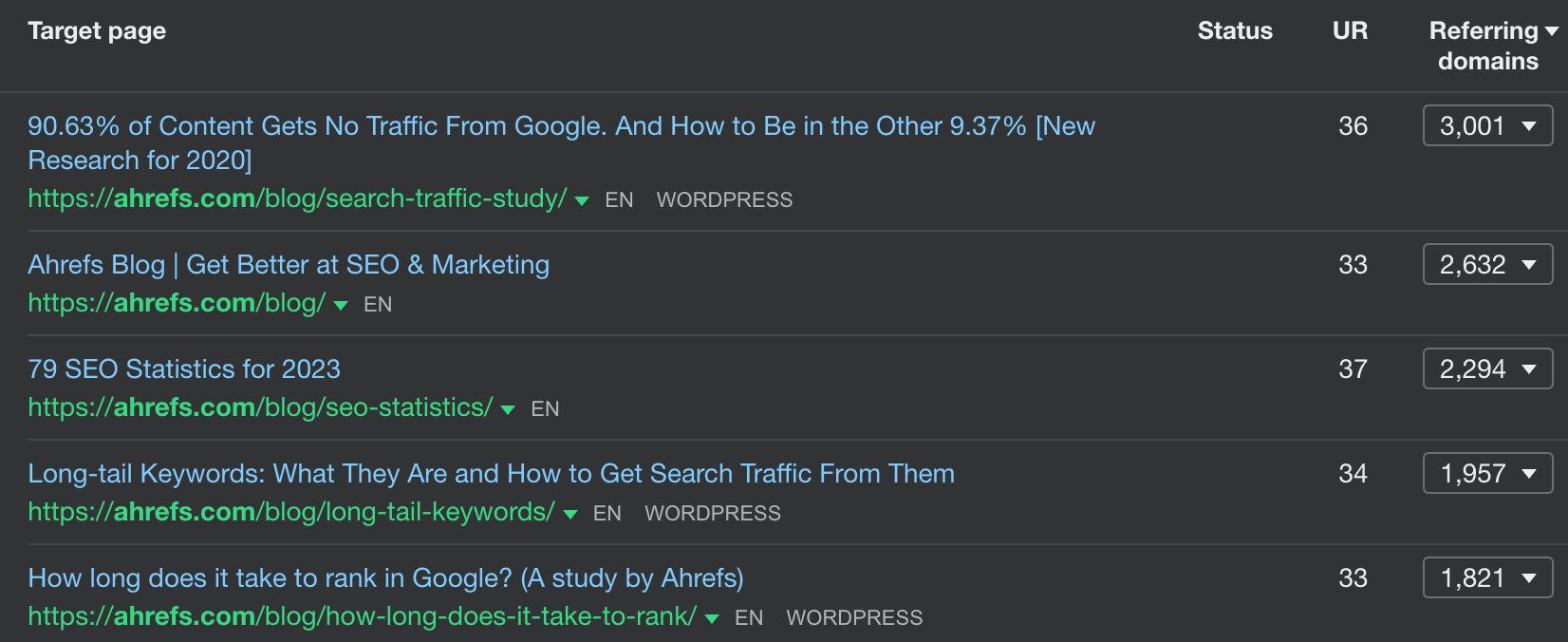
For that reason, we regularly create data studies because we know it will perform well because our audience loves data.
Keep a close eye on your analytics, look for insights and test your theories.
Many blogs limit themselves to one of two monetization sources: affiliate marketing or ads. This is a huge blogging mistake.
In fact, Dom Wells states:
Based on our testing across dozens of sites, we’ve never actually found display ads to reduce affiliate commissions.
To maximize profit potential, consider doing two things.
1. Try new monetization methods
Rather than using just ads, consider adding affiliate links to your monetization mix. You can also try creating your own digital products like e-books or courses.
2. Try new monetization sources
Instead of using just Google Ads, try MediaVine or Ezoic. RPMs are variable from network to network so it’s always worth testing.
When it comes to optimizing your monetization strategy, you need to test, test, test. Otherwise, you’re leaving money on the table.
Even if you’ve been in the industry for a while, it’s unlikely that you’ll know everything. You can overcome this by interviewing experts and including their comments in your article.
For example, I’ve never built a personal brand on LinkedIn—so I had to reach out and ask marketing consultant David Fallarme.
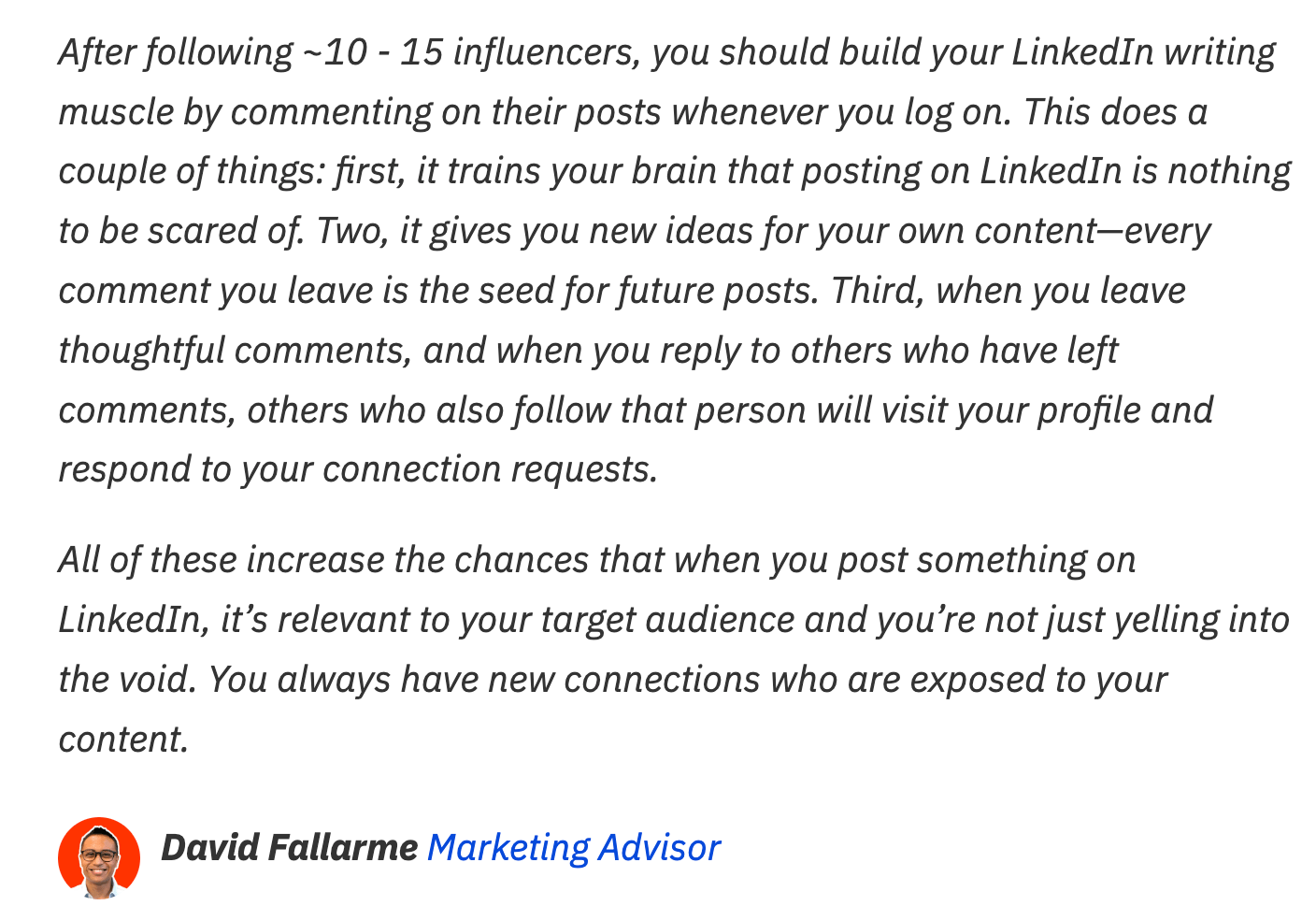
Here’s a simple way to find experts if you’re not sure who to reach out to:
- Go to Content Explorer
- Enter the topic of your content
- Go to the Authors tab
This will show you a list of authors who’ve published content about the topic.
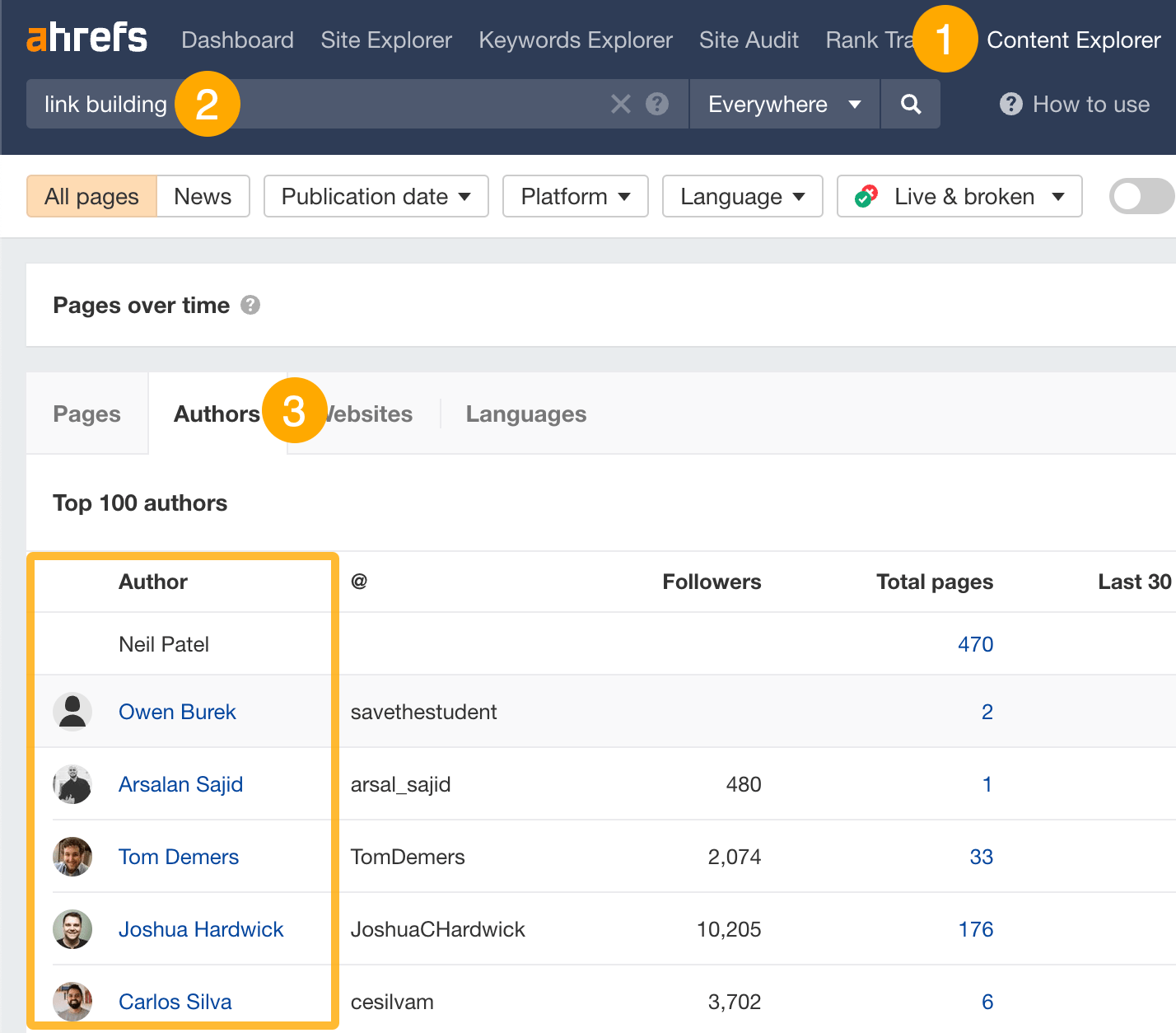
Examples help clarify complex concepts and can substitute for long explanations. I’ve used plenty in this article.
But here’s one more example, for example’s sake:
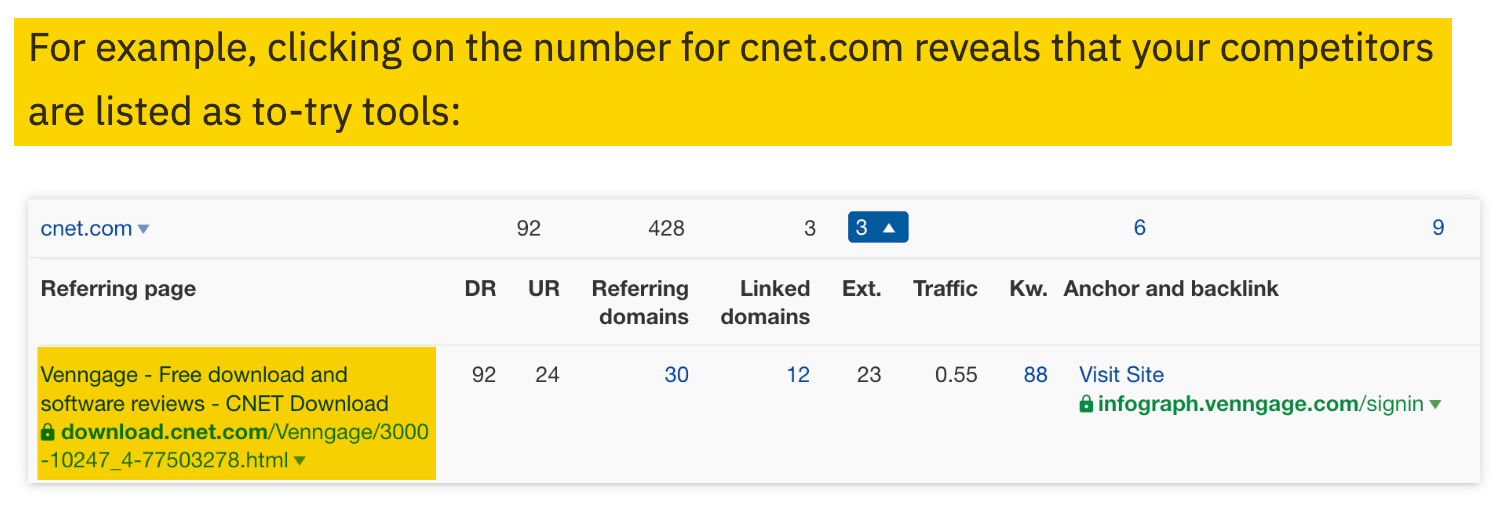
Internal links are links from one page on the same domain to another. They can pass PageRank, which can help boost a page’s rankings.
Here’s how to find pages to add internal links to:
- Sign up for the free Ahrefs Webmaster Tools (AWT)
- Run a crawl using Site Audit
- When the crawl is done, go to the Internal link opportunities report
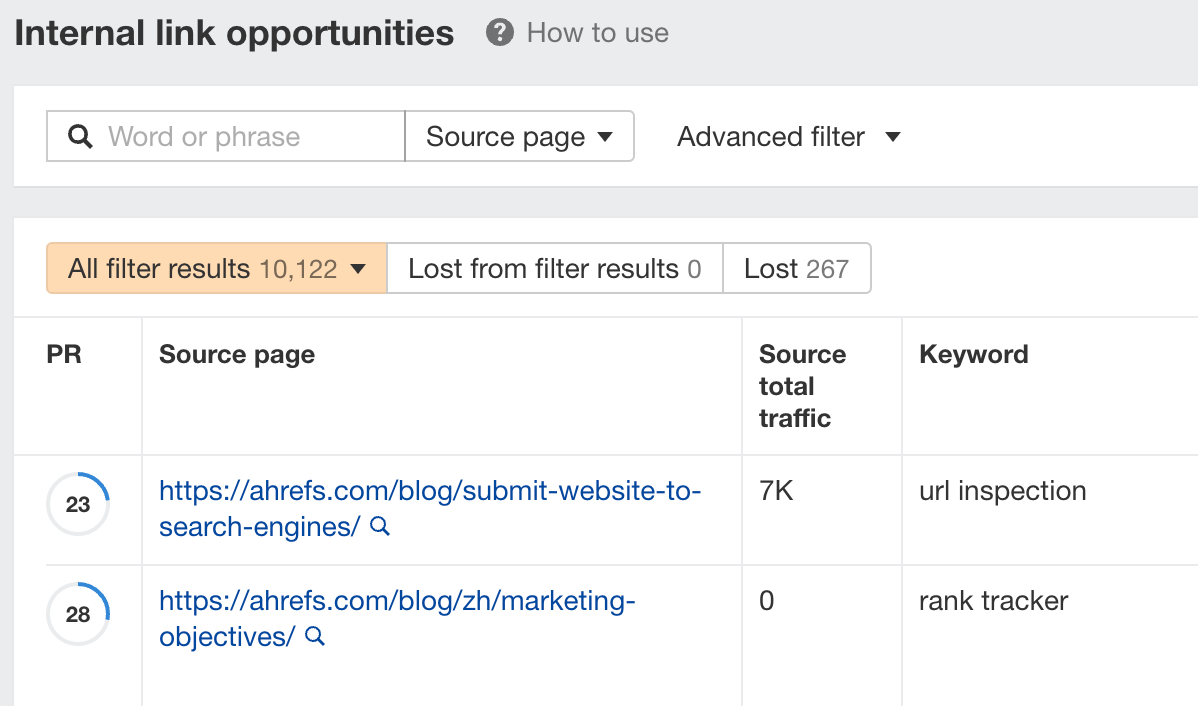
This report shows you relevant internal link opportunities on your site. Search for the URL of the page you want to boost and choose “Target page” from the dropdown.

For example, here’s a suggestion to link to our post on faceted navigation from our one on duplicate content:

Read our guide on how you can maximize the benefits of using internal links.
With time, your thoughts, opinions, and knowledge will improve. You’ll be doing your audience a disservice if you don’t update your older content to reflect your newfound knowledge and ideas.
What’s even better is that refreshing your content can often boost your page’s traffic too. For example, I updated my post on free SEO tools, and traffic shot up:
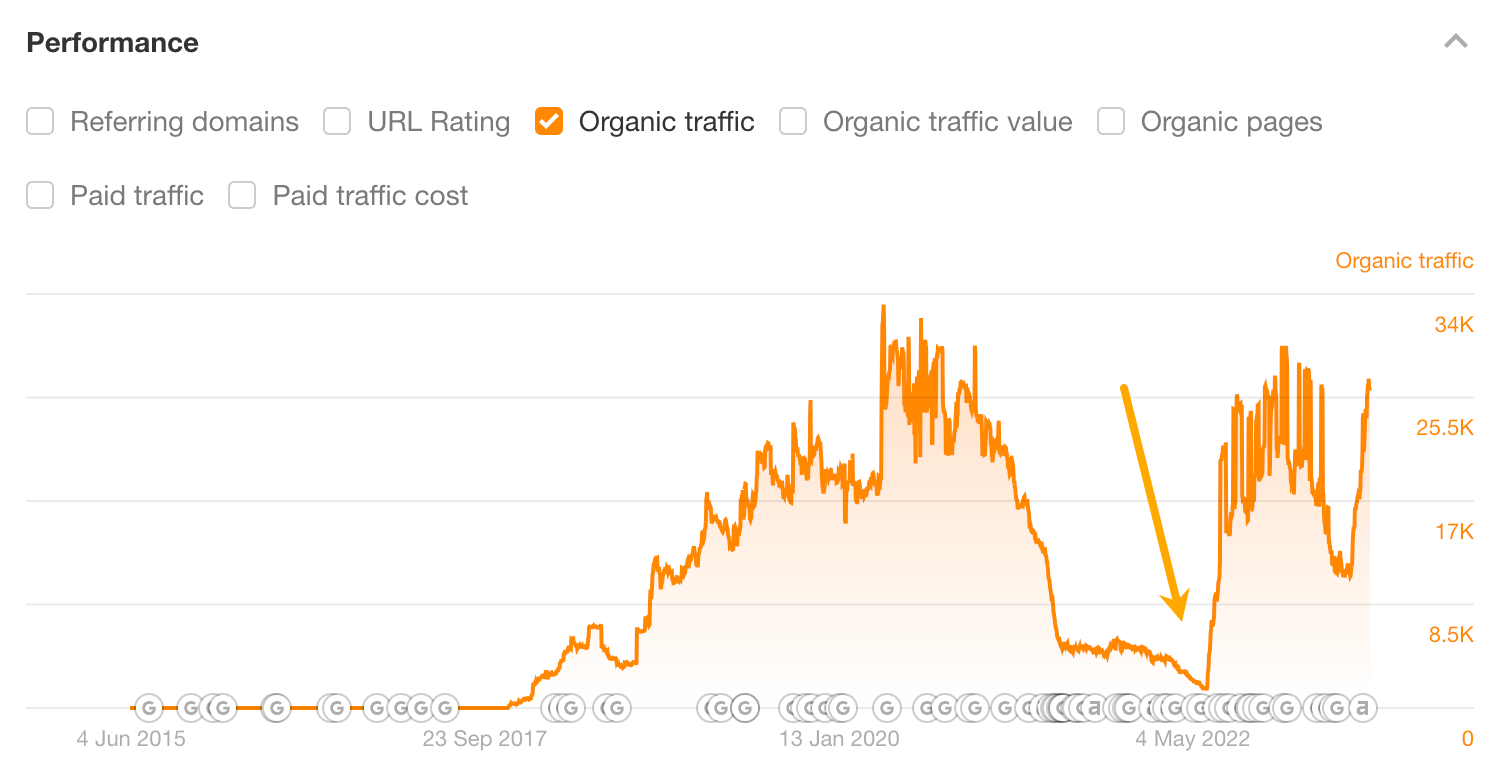
To find out which content to refresh, install our free WordPress SEO plugin and run a content audit. Then follow the guide below to learn how to refresh and republish your content.
Search intent is the why behind a search query. Google aims to understand that so it can serve the most relevant results.
If you want to stand a higher chance of ranking, you want to match search intent.
To figure out search intent, simply Google your target keyword and look at the top-ranking results. For example, we see that the top-ranking pages for “best wireless headphones” are mostly blog posts listing recommendations:
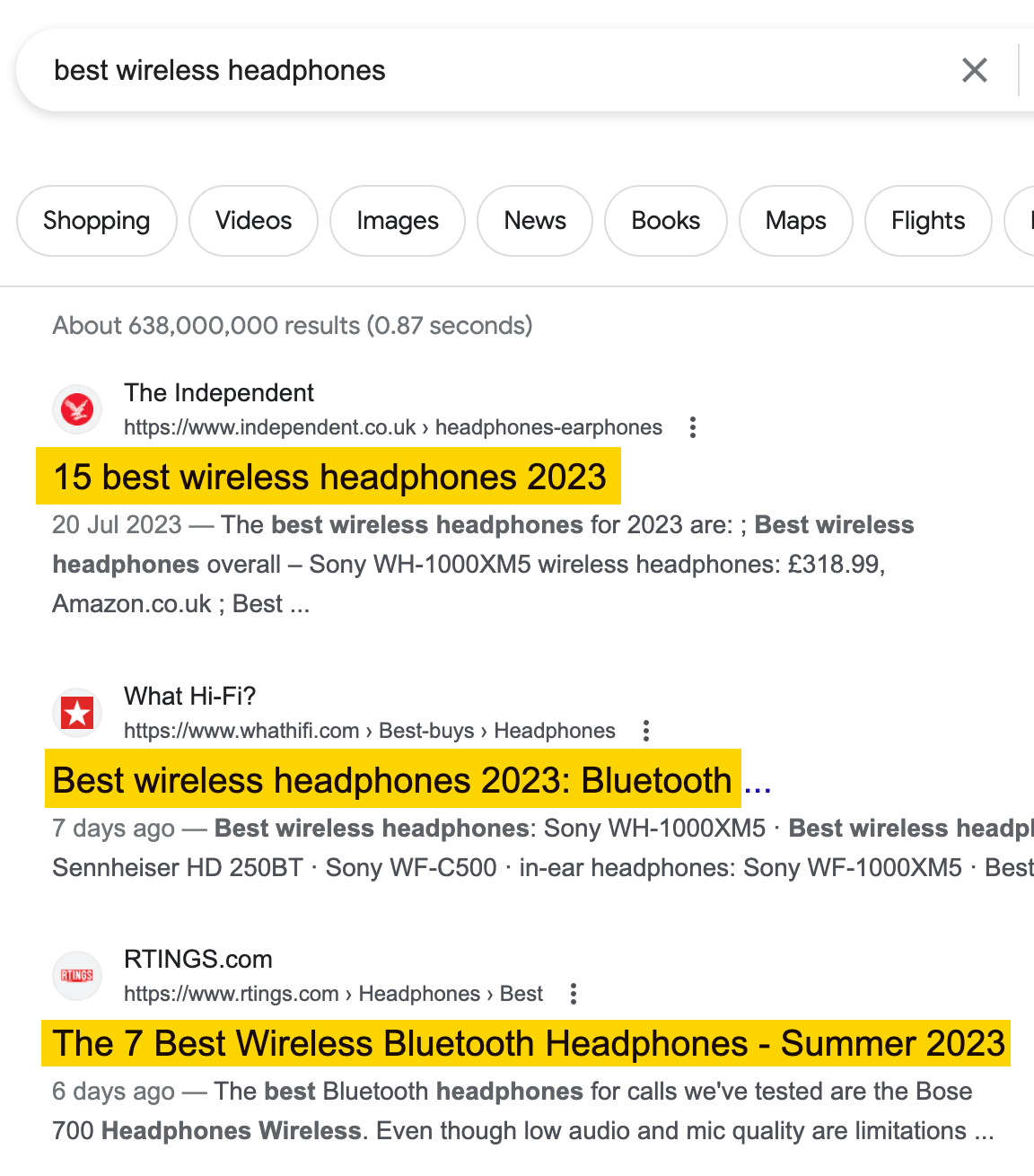
So if we’re targeting this keyword, we’ll have to create a listicle too.
Reach our complete beginner’s guide to master search intent.
If you want to gain muscle, you need to hit the gym and get in your reps. Blogging is no different. You need to practice writing, publishing, and promoting your content.
That’s where the “write 100 blog posts” project comes in.
Commit to writing 100 blog posts – one post per week. Feel free to change the frequency to what you feel comfortable committing to. I can guarantee you that your hundredth blog post will be significantly better than your first.
In fact, I attribute my biggest jumps in improvements to these “do 100” projects.
This is my 93rd post for Ahrefs blog.
Final thoughts
Creating a successful blog won’t happen overnight. But these blogging tips are proven ways to get better at blogging.
If you want to start improving your blogging skills right now, choose 5 of these tips to try right now. And if you have any questions, feel free to ping me on Twitter or Threads.
Content Copyrights Belong to The Author. All Rights Reserved.
We're A Dallas Digital Marketing Agency That is Experts At Social Media Marketing, Website Design and Emarketing and Promotion.

